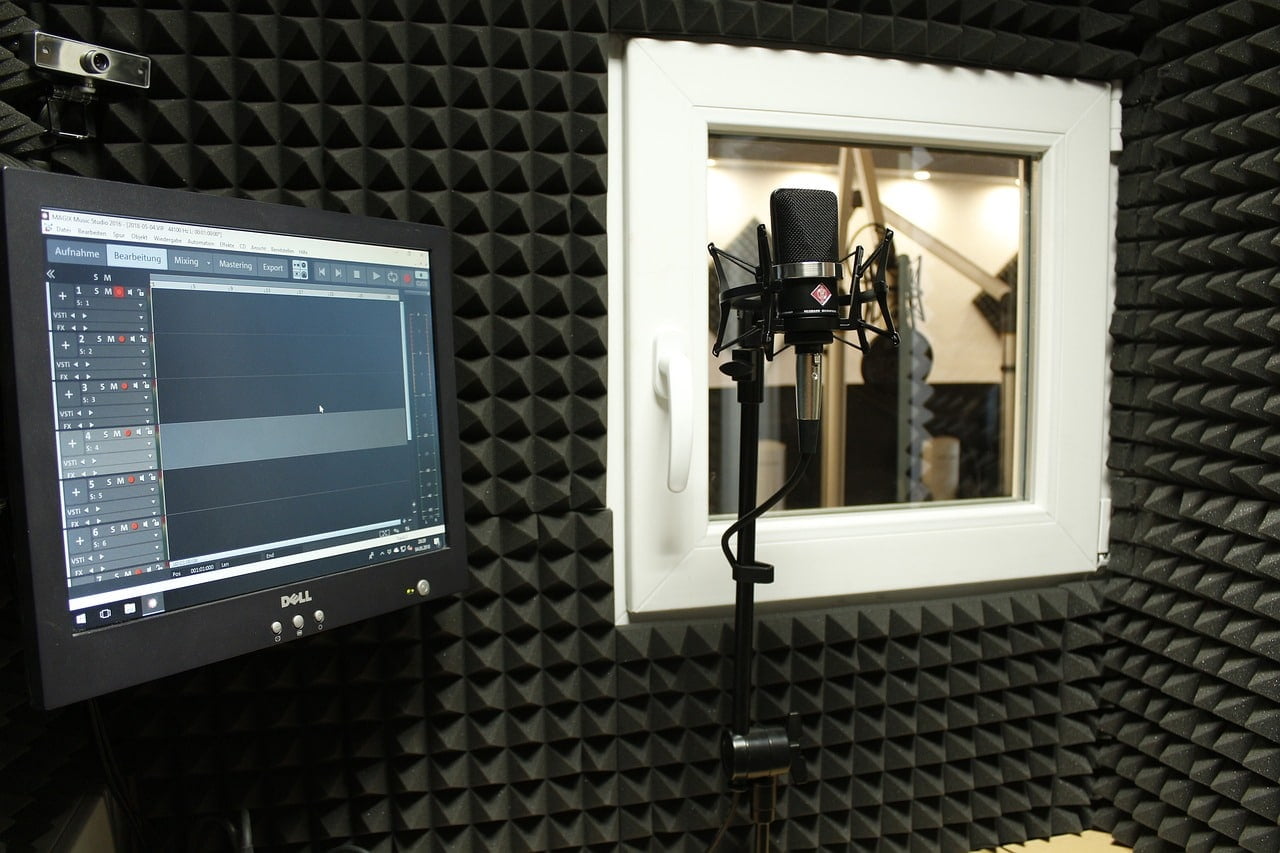Demystifying Recording Studio Acoustics: From Professional to Home Spaces
The field of acoustics often appears enigmatic to most of us, yet it plays a pivotal role in creating optimal sound environments, especially in the realm of recording studio acoustics. While well-established venues and professional recording studios allocate substantial resources to acoustic designers, the average musician frequently prioritizes investments in instruments and gear over enhancing their recording studio acoustics. Fortunately, advances in technology have made it more feasible to improve recording studio acoustics without breaking the bank, and investing in soundproofing for music studio walls is within most peoples reach.
Addressing Soundproofing and Insulation
Recording studio’s necessitate efficient soundproofing because sound invariably finds its way. Mass and air are essential in blocking sound effectively within recording studio acoustics. A construction technique referred to as a “floating room” creates a self-contained interior space, offering excellent sound isolation, particularly beneficial for studio acoustics. For those unable to embark on extensive construction, sealing potential sound leakage points within the existing structure and adding sound-blocking layers using studio acoustic panels to walls can make a significant impact on recording studio acoustics.
Using an online acoustic treatment calculator can give you the exact requirements for recommended acoustic panel room treatment, just type in your room dimensions and get your results.
Partial Isolation for Specific Elements

Recording studio acoustics often don’t require total room isolation. Instead, isolating specific elements, such as vocal or drum recording, can be accomplished through the use of isolation booths. Portable “iso-booths” provide flexibility and cost-efficiency in addressing the intricacies of recording studio acoustics. DIY plans are readily available for individuals inclined to construct their own solutions.
1. Isolation Sound Booth:

Recording vocals or live instruments often requires a controlled environment to capture clean and crisp audio. An Isolation sound booth is relatively small, a soundproofed room within the studio that offer a quiet and controlled space for recording specific elements. These booths are designed to minimize external noise and prevent sound leakage, ensuring that the recording is free from unwanted interference.
2. Portable Iso-Booths:

For those who don’t have the luxury of permanent isolation booths, portable isolation booths, often referred to as “iso-booths,” provide a flexible solution. These modular, lightweight structures can be assembled and disassembled easily, making them ideal for home studios or facilities with limited space. They offer a cost-effective way to achieve isolation for specific recordings while retaining the flexibility to reconfigure your studio as needed.
3. DIY Solutions:

DIY (Do-It-Yourself) enthusiasts can find a plethora of resources and plans online to create their isolation solutions. These DIY projects typically involve building compact, soundproof enclosures for recording vocals or specific instruments. While they may require a bit of handiwork, they offer a customizable and budget-friendly approach to partial isolation within your recording studio acoustics.
4. Microphone Isolation Shield / Panels:

For those who need to isolate the sound at the source, microphone isolation panels are a practical solution. These portable and adjustable shields surround the microphone, effectively reducing ambient noise and preventing sound reflections. They’re particularly useful for recording vocals or acoustic instruments in less-than-ideal acoustic environments.
5. Amp and Drum Screens:

Musicians who want to isolate guitar amplifiers or drum kits can use screens or enclosures specifically designed for these purposes. These screens help direct and contain the sound from amplifiers and drum kits, preventing excessive bleed into nearby microphones. They come in various sizes and configurations to suit different recording needs.
Reducing Computer Noise and Balancing Sound
In the context of recording studio acoustics, it’s crucial to address computer noise, as computers can introduce unwelcome sounds into an otherwise quiet environment. Replacing a computer’s stock fan with a quieter alternative or opting for sound-dampening cases can significantly reduce computer-generated noise, a vital consideration for achieving desirable recording studio acoustics. Achieving the right balance of sound involves semi-isolation. In some cases, a bit of sound leakage can be beneficial, adding a natural element to recordings that can be lost when elements are entirely isolated.

In Conclusion
The science of recording studio acoustics can be complex, but there are ways to enhance your studio’s sound environment without a substantial budget. Equipping your space with soundproofing, insulation, and partial isolation is essential for optimal recording studio acoustics. Reducing computer noise and achieving sound balance with semi-isolation are crucial components. When it comes to room acoustics, it’s essential to identify issues and employ absorption and diffusion techniques. Trust your ears, as in the world of recording studio acoustics, if it sounds good, it likely is good.
Keep in mind that your budget should serve as your compass, and there’s no need to hurry. Begin by acquiring the fundamental items, prioritizing quality over quantity. As you advance in your musical and recording voyage, you can gradually expand your studio setup. For more in-depth insights into crafting your dream studio, we recommend reading our comprehensive blog post, “Building Your Dream Studio” Ultimately, the key is to relish the journey, whether you’re capturing your inaugural track or your hundredth masterpiece.

